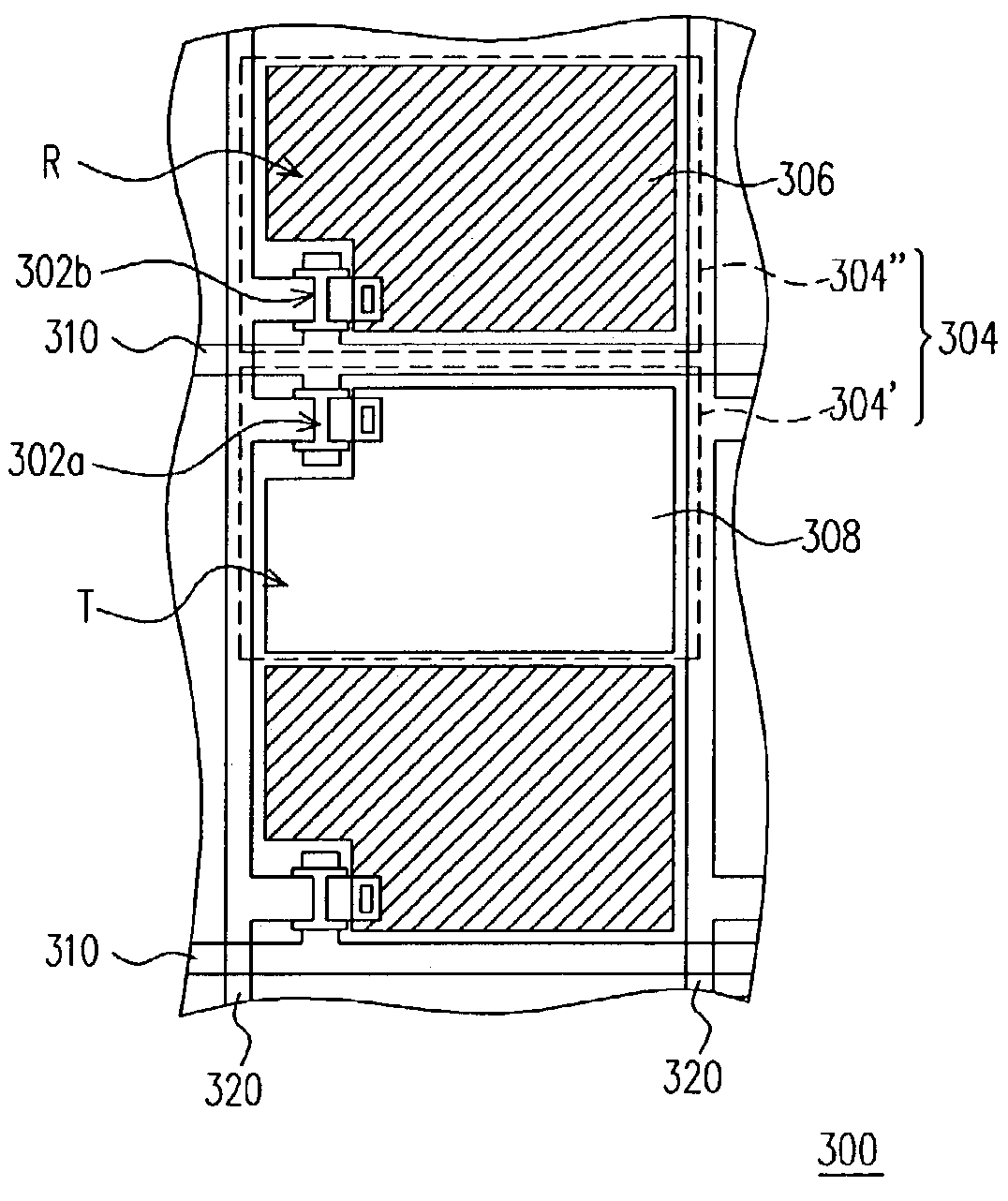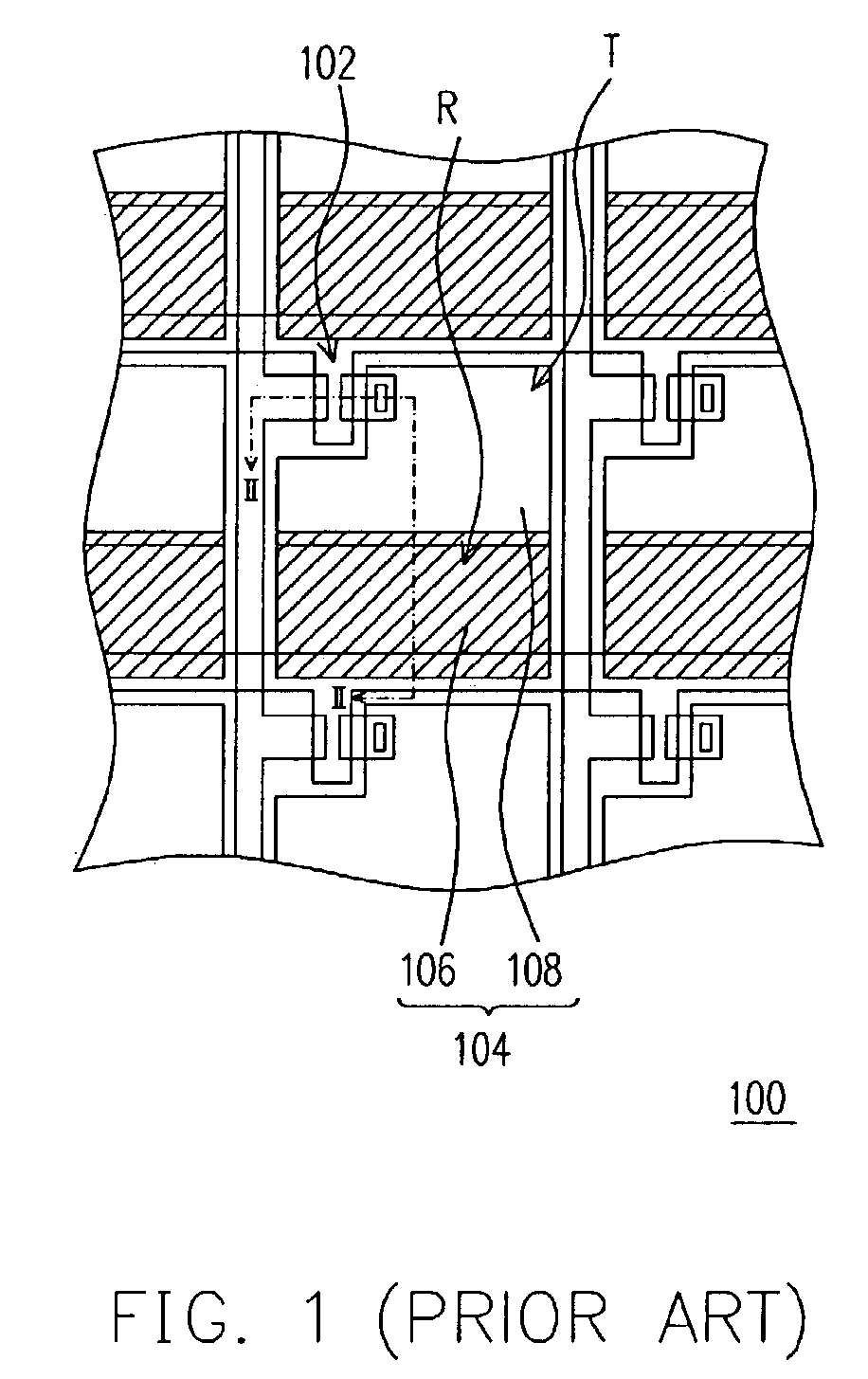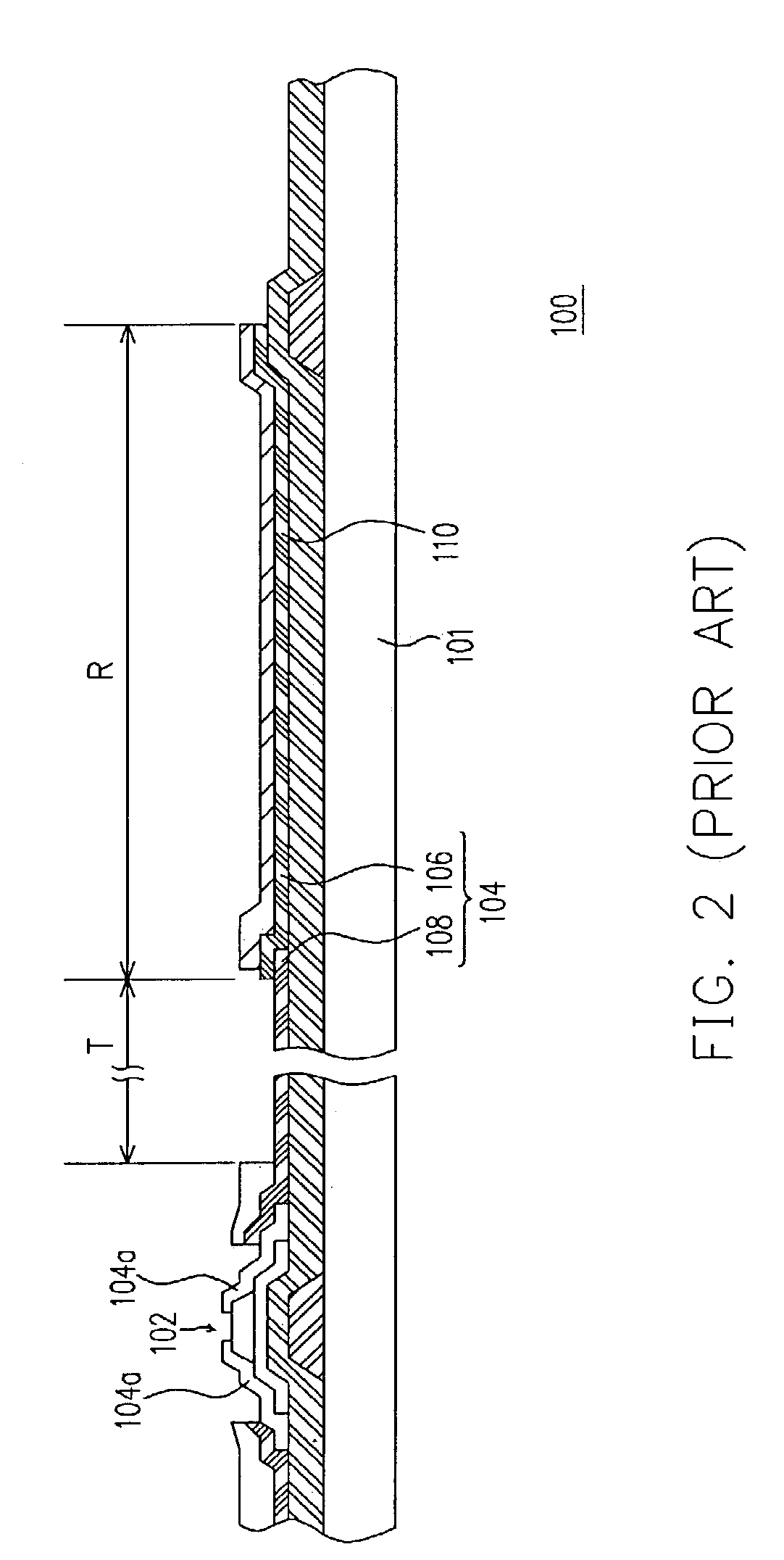Thin-film transistor array substrate
a transistor array and thin film technology, applied in non-linear optics, instruments, optics, etc., can solve the problems of space utilization and power consumption of cathode ray tubes, increase the fabrication cost, etc., and achieve the effect of reducing the fabrication cos
- Summary
- Abstract
- Description
- Claims
- Application Information
AI Technical Summary
Benefits of technology
Problems solved by technology
Method used
Image
Examples
first embodiment
[0018]Referring to FIG. 3, in the present invention, a thin-film transistor array substrate 200 of a transreflective liquid crystal display comprises a substrate (not shown), a plurality of pixels 204, a plurality of scan lines 210 and a plurality of data lines 220. Each of the pixels 204 is located between two neighboring scan lines 210 and two neighboring data lines 220. Each pixel 204 has a plurality of sub-pixels.
[0019]In this embodiment, each pixel 204 has a transparent sub-pixel 204′ and a reflective sub-pixel 204″. Each transparent sub-pixel 204′ defines a transparent region T, while each reflective sub-pixel 204″ defines a reflective region R. Each transparent sub-pixel 204′ includes a transparent pixel electrode 208 and a first thin-film transistor 202a, while each reflective sub-pixel 204″ has a reflective pixel electrode 206 and a second thin-film transistor 202b. The reflective pixel electrode 206 is made of a material with high reflectivity such as aluminum, silver, tan...
second embodiment
[0022]FIG. 4 shows a top view of a thin-film transistor array substrate 300 of a transreflective liquid crystal display in the present invention. The thin-film transistor array substrate 300 comprises a substrate (not shown), a plurality of pixels 304, a plurality of scan lines 310 and a plurality of data lines 320. The pixels 304 are located on the substrate between two neighboring data lines 320. Each of the pixels 304 has a transparent sub-pixel 304′ and a reflective sub-pixel 304″. The transparent sub-pixel 304′ defines a transparent region T, while the reflective sub-pixel 304″ defines a reflective region R. The transparent sub-pixel 304′ comprises a transparent pixel electrode 308 and a first thin-film transistor 302a, and the reflective sub-pixel 304″ comprises a reflective pixel electrode 306 and a second thin-film transistor 302b.
[0023]In this embodiment, the first thin-film transistor 302a and the second thin-film transistors 302b are disposed at opposing sides of the tra...
third embodiment
[0024]FIG. 5 shows a top view of a thin-film transistor array substrate 400 of a transreflective liquid crystal display in the present invention. The thin-film transistor array substrate 400 comprises a substrate (not shown), a plurality of pixels 404, a plurality of scan lines 410 and a plurality of data lines 420. The pixels 404 are located on the substrate between two neighboring data lines 420. Each of the pixels 404 has a transparent sub-pixel 404′ and a reflective sub-pixel 404″. The transparent sub-pixels 404′ define a transparent region T, while the reflective sub-pixels 404″ define a reflective region R. Each transparent sub-pixel 404′ comprises a transparent pixel electrode 408 and a first thin-film transistor 402a, and each reflective sub-pixel 404″ comprises a reflective pixel electrode 406 and a second thin-film transistor 402b.
[0025]In this embodiment, the first thin-film transistors 402a and the second thin-film transistors 402b are disposed at different sides of the...
PUM
| Property | Measurement | Unit |
|---|---|---|
| transparent | aaaaa | aaaaa |
| corrosion | aaaaa | aaaaa |
| reflectivity | aaaaa | aaaaa |
Abstract
Description
Claims
Application Information
 Login to View More
Login to View More - R&D
- Intellectual Property
- Life Sciences
- Materials
- Tech Scout
- Unparalleled Data Quality
- Higher Quality Content
- 60% Fewer Hallucinations
Browse by: Latest US Patents, China's latest patents, Technical Efficacy Thesaurus, Application Domain, Technology Topic, Popular Technical Reports.
© 2025 PatSnap. All rights reserved.Legal|Privacy policy|Modern Slavery Act Transparency Statement|Sitemap|About US| Contact US: help@patsnap.com



